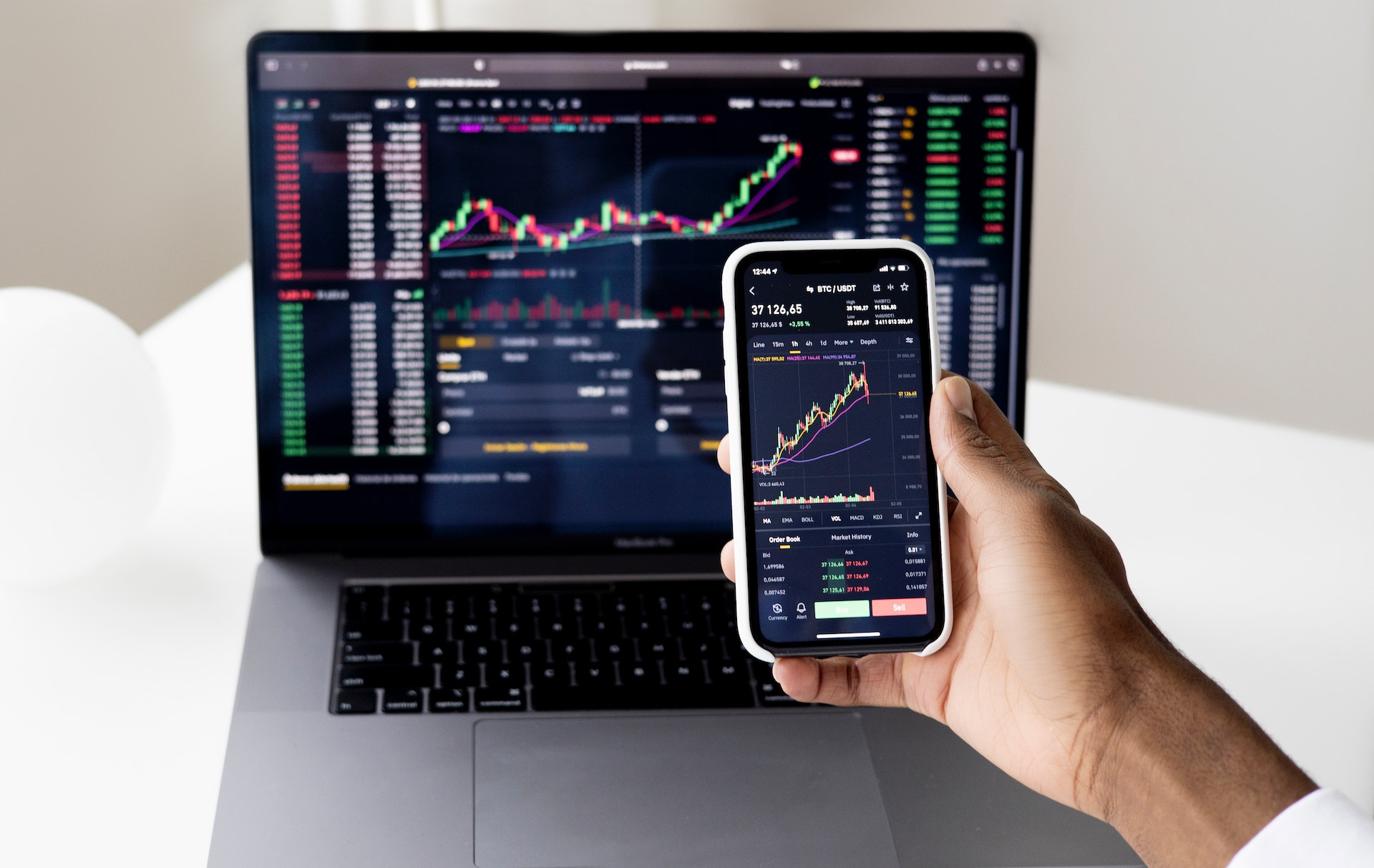Trading Risk Management and The One Percent Rule
Trading on the financial market without risk management is like jumping out of a plane without a backup parachute. You wouldn’t want to rely on only one parachute functioning perfectly.
Now, making a bad call in today’s volatile market isn’t going to result in a life-or-death situation. But, when you don’t plan your trades, you risk losing a massive amount of money. As a result, you can be left in a panic-stricken state with your entire portfolio in jeopardy.
Before we tackle strategies to cut the chances of loss in the market, let’s go over what risk is and how we can take steps to manage it.
Psychology of risk
As humans, we’re hardwired to seek pleasure and avoid pain. When we cross the street, step into someone’s home, or drive to work, our subconscious constantly scans our surroundings for threats. So, although we’re unaware of the perpetual state of “fight or flight” we’re in most of the time, it's one of our most primal instincts.
Once our brains recognize something as a risk, it starts firing off signals that instruct us to stay away. Because our brains' threat response happens so quickly, it doesn’t give us time to think about how to act rationally. Thus, it can diminish cognitive abilities and slow down our decision-making.
And this is exactly why we need strong risk management skills.
What is risk management?
When we attempt to manage risk, we develop a framework to help us control uncertainty. Planning for potential threats allows us to predict and prepare for a risk’s impact. This means that with practice, we can train our brains to react to a crisis more rationally and less emotionally.
So, how does this practice work in the world of trading? Let’s take a look.
Controlling risk in the financial market
Trading risk management begins with predicting and assessing financial outcomes for trading decisions. Once all possible outcomes have been identified, traders develop a plan for how to lessen the impact of risk associated with each decision. In simpler terms, whenever an investor analyzes the risk involved in a trade, he is practicing risk management.
Why traders need to plan for potential threats
All it takes is one bad call to blow your entire account. This is why even the most talented trader in the world will suffer losses from time to time. Losses are simply a part of the trading game that every investor accepts before entering the market. Thus, they’re impossible to avoid 100% of the time. This said, every trader needs to have a strategy in place to prepare for unforeseen activity in the market. Planning each trade will greatly reduce the number of losses incurred.
Benefits of having a strategy in place
A trading risk management strategy lets traders rehearse for risks. It allows them to develop muscle memory to respond to a crisis more efficiently. Likewise, mitigating the risk forces you to plan your trades. This means that as soon as you enter the trade, you can sit back and relax as the rest is mechanical.
When traders can effectively manage risk, they cut down future losses because they let logic take over their emotions.
Emotion takes a back seat to logic
When real money is on the line, people start to sweat and go into fight or flight mode. As a result, their emotions take the wheel and begin dictating their trades. Think about a gambler on a lucky streak who suddenly encounters a huge loss. It’ll likely provoke them to keep gambling, desperate to make their money back. Conversely, a gambler on an unlucky streak who catches a big break may be enticed to irrationally hold on for more wins.
But, having a strategy that helps you prepare for unpredictable activity in the market will put your emotions in the back seat. Meaning it will force you to rely on logic and trading signals. Thus, trading risk management software is essential for every investor. It keeps emotions in check and helps you stick to a set of rules for trades.
Trading risk management strategies
So, how do you build a risk management trading strategy? It all comes down to what works for your trading habits and what you’re comfortable with losing. In general, strategies that mitigate the level of risk include minimizing the negative impact of the risk, avoiding the risk, transferring the risk, and accepting the inevitable consequences that come with a loss if a particular trade doesn’t go your way.
Let’s dive into some of the most popular methods for controlling risk in the exciting yet turbulent world of trading.
Calculate your reward-risk ratio
Before entering or exiting a trade, traders need to measure the amount of risk and weigh it against the amount of the potential reward. Since a higher risk comes with a higher reward, the challenge is striking a balance between the two. This ensures you’re comfortable with every trade you make.
The most common reward-risk ratio is 2:1. With this ratio, your projected profits will always be double that of your greatest possible losses. Likewise, you won’t enter trades that put your entire account in jeopardy.
Diversify your trades
When investors leverage diversification, they’re never reliant on a single asset performing well. They're also protected from big, unprecedented swings in the market. In other words, including diversification in a trading risk management strategy ensures you don’t have all your eggs in one basket.
Conduct a scenario analysis
When practicing stock risk management, it’s critical to conduct a scenario analysis for the assets you plan to trade with. This is where technical analysis comes in handy. It helps traders identify and analyze market trends so they can make smarter decisions.
Apply stop losses
Utilizing a stop loss is one of the easiest and most popular methods of day trading risk management. A stop loss point is the predetermined price at which you decide to sell the stock; and in turn, accept a loss on the particular trade. Thus, stop loss orders generally occur when trades don’t pan out in your favor.
When stop loss points are used effectively, day traders protect their accounts from irrevocable losses. This is because a stop loss will automatically close your position if the market swings against you. As a result, it'll prevent you from losing a substantial amount of money. This is how these points combat a gambler’s mentality of thinking if you keep holding on, you'll make your money back.
The most difficult aspect of a stop loss point is knowing where to place it to minimize the risk of an unsuccessful trade. So, let’s take a look at where to set them to protect yourself against dangerous losses.
How to set a good stop loss position
Technical indicators and fundamental analysis play key roles in setting effective stop loss orders. To establish a strong stop loss technique, traders will backtest and apply it to every trade entered. They'll continue to do this until they’ve mastered a strategy that works for them.
A popular way to set stop loss points is using moving averages since they’re easy to calculate and set with mathematical algorithms.
Longer-term moving averages are best used for stocks with higher volatility. This is because they lessen the risk of an insignificant price swing triggering the execution of a stop loss order. Conversely, tightening stop loss points is beneficial in markets with low volatility, since the stock price won’t be moving too much.
Size your trades
Sizing trades is one of the most critical decisions investors make. This is especially true in our market today, which can be highly volatile. So, in every trade you make, always make sure you only risk a slight portion of your total account.
In a nutshell, the size of your position for any trade must be proportional to the predicted outcome. This expected outcome is the probability of encountering a loss multiplied by the loss amount, plus the probability of encountering a gain multiplied by the gain amount. When investors size their trades following this premise, they ensure that they only lose an amount of money they’re comfortable with.

The one-percent rule
The one-percent rule of trading risk management limits the risk of loss on any trade to 1% or less of a trader’s total account. In other words, it suggests that you shouldn’t ever bet more than 1% of your capital or account on a solitary trade. So, if you have $20,000 in your trading account, your position should never exceed $200.
Many day traders pair the one-percent rule with stop losses. For example, a day trader could risk 1% of their account by trading small positions with stop loss points set far away from the entry price. Likewise, they could risk 1% by trading large positions with stop loss points set more tightly.
The bottom line
A trading risk management strategy is critical for curbing the risks of the market. As one of the most important aspects of long-term success, it's also an underrated facet of trading. So, before you start entering and exiting trades left and right, find a strategy to control risk that you're comfortable with.
Chart Prime technical analysis tools help you fiscally prepare for a market where anything can happen. With our tools, you can become the successful, savvy trader you’ve always wanted to be.

